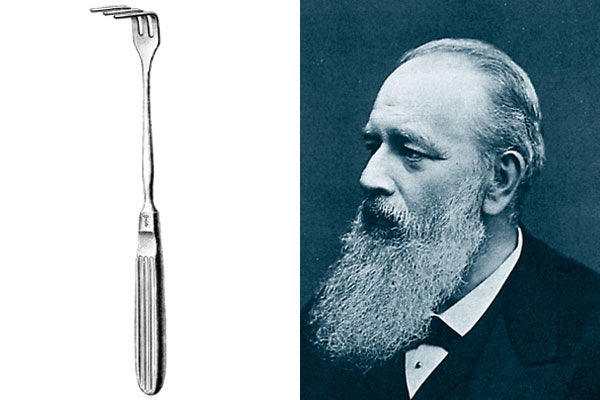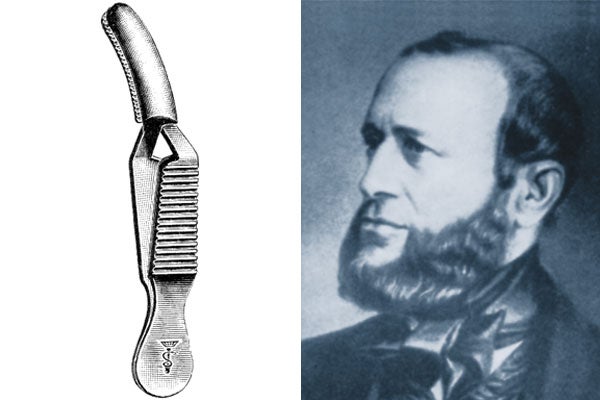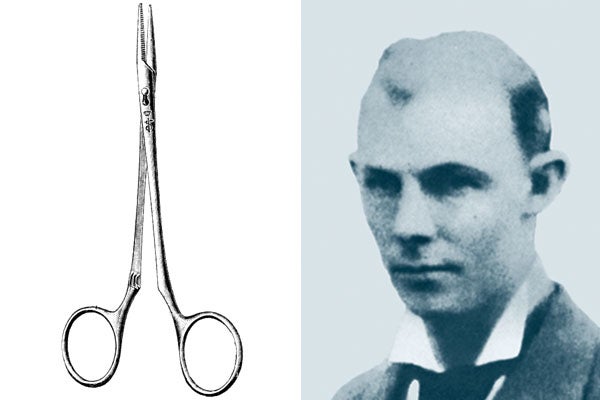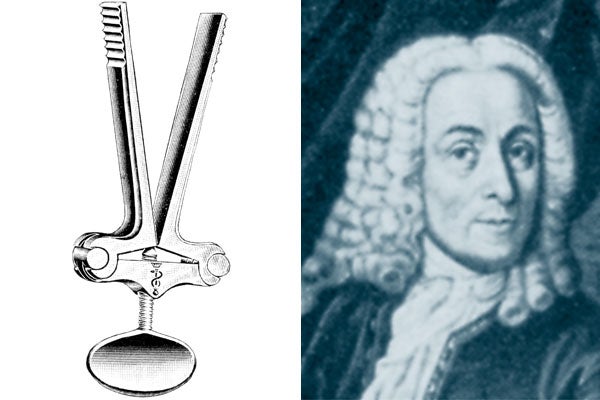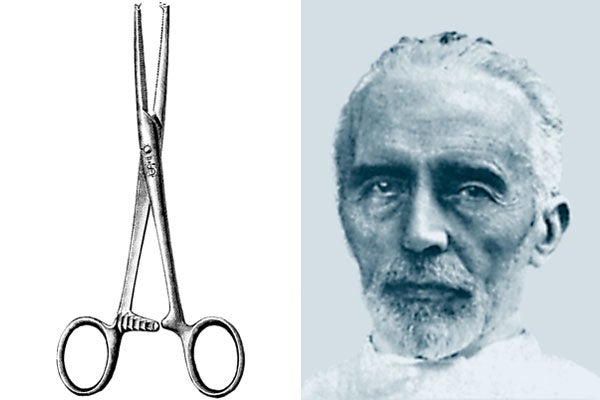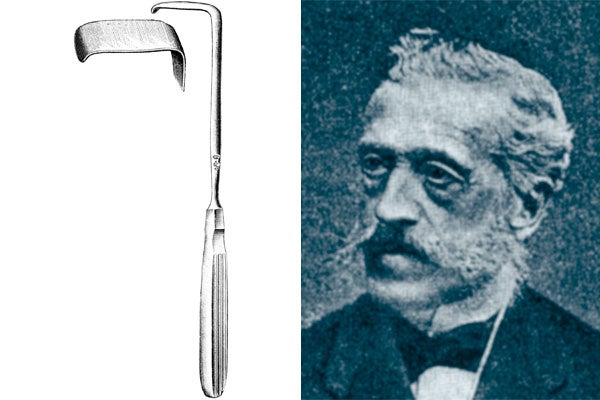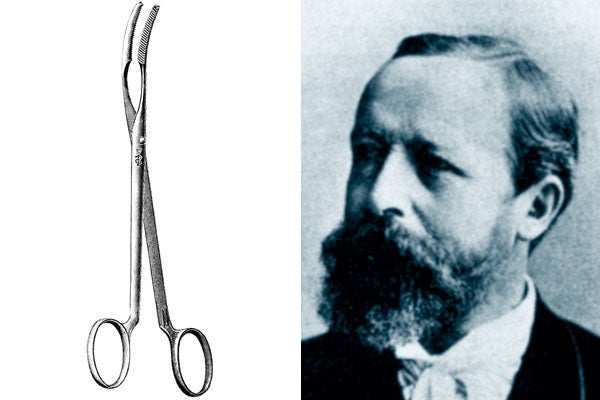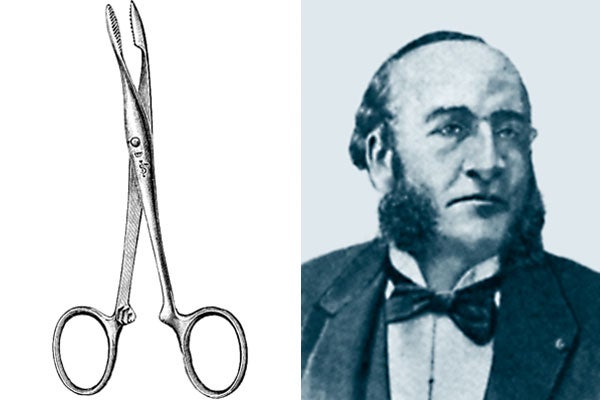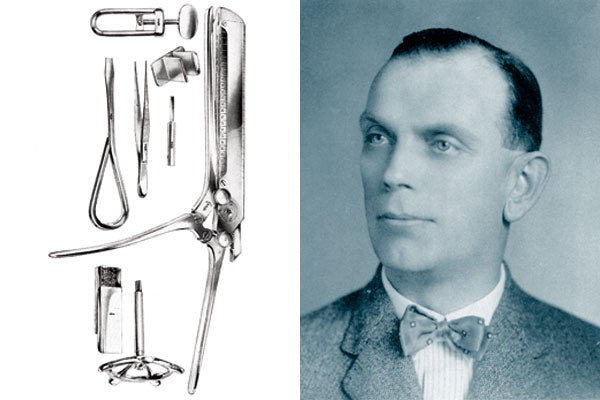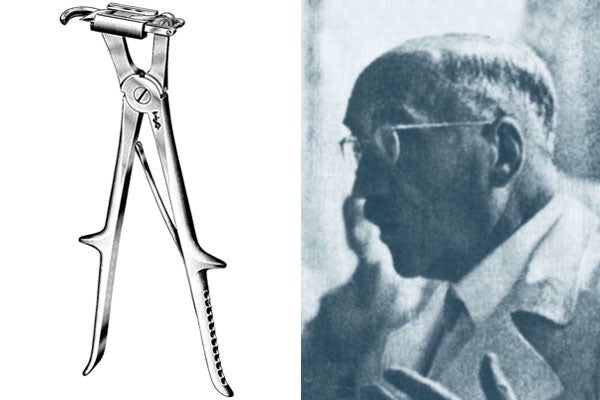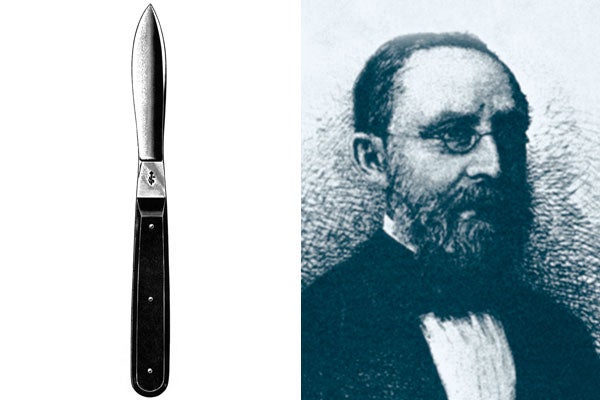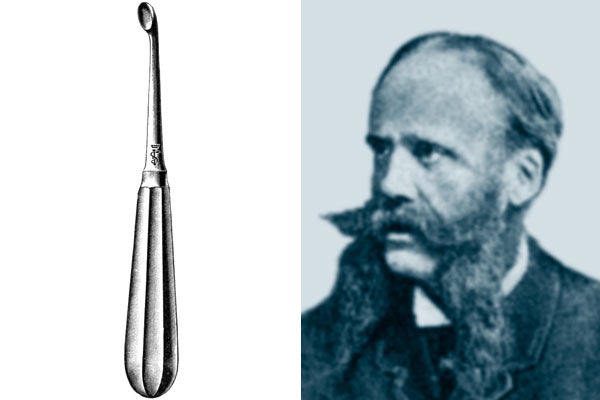Theodor Billroth
Austrian surgeon, Zürich, Wien 1829-1894, born in Bergen/Rügen (D), died in Abbazia
Billroth performed the first ever gastrectomy in 1881 on a female patient with stomach cancer. His technique entered history as the "Billroth I Operation" and was followed four years later by the "Billroth II Operation". He was the first to perform a resection of the oesophagus and the pylorus and also undertook the total removal of the larynx.
Johann Friedrich Dieffenbach
German surgeon, Würzburg/Paris/Berlin, 1792-1847, born in Königsberg, died in Berlin
Dieffenbach specialised very early on in plastic surgery, especially rhinoplasty. As senior consultant in the surgical department of the Berlin Charité he directed his interest towards subcutaneous operations such as tenotomy and other orthopaedic complaints. He also carried out research on blood transfusion, stuttering and squints.
William Steward Halstedt
American surgeon, New York, Baltimore 1852-1922, born in New York, died in Baltimore
Halsted is regarded as the inventor of conduction and low spinal anaesthesia. He developed the first rubber surgical gloves and made important contributions to intestinal, liver, goitre and thoracic surgery. Halsted's suture and Halsted's operation, extended radical surgery for cancer of the mammary gland, bear his name.
Lorenz Heister
German anatomist, Amsterdam, Altdorf, Helmstedt 1683 - 1758, born in Frankfurt/M, died in Bornum
Heister made his reputation as a surgeon and scholar in Altdorf and Helmstedt. He is regarded as the founder of scientific surgery in Germany. The 12,000 books in his private library bear witness to his learning. He did not discover anything radically new, but various surgical instruments can be traced back to him and bear his name.
Theodor Kocher
Swiss surgeon, Bern 1841-1917, born in Bern, died in Bern
Kocher is regarded throughout the world as the pioneer of thyroid surgery. He standardised many surgical techniques, for example the "collar incision" or "Kocher's bow incision" on the knee. He was also famous for his treatment of hip luxation and inguinal hernias. He was awarded the Nobel Prize for Medicine in 1909.
Bernhard von Langenbeck
German surgeon, Göttingen, Kiel, Berlin 1810-1887, born in Paddingsbüttel/Hannover, died in Wiesbaden
The famous German war surgeon gave great service to traditional surgery and to the treatment of gunshot fractures and joint resections, but also to uranoplasty, cheiloplasty and rhinoplasty, among many other areas. Langenbeck is also regarded as the founder of experimental surgery.
Joseph Baron Lister
English surgeon, Glasgow, Edinburgh, London 1827-1912, born in Upton/Essex, died in Walmer/Kent
Lister made intensive studies of Louis Pasteur's writings on disinfection. He invented an apparatus for spraying carbolic acid to destroy germs and soaked his instruments in the same solution. In 1865 he performed the first ever operation in Europe under germ-free conditions – modern, antiseptic surgery is born.
Johann von Mikulicz-Radecki
Austrian surgeon, Krakau, Königsberg, Breslau 1850-1905, born in Cernowitz/Bukowina, died in Breslau
Von Mikulicz actively supported Semmelweis's demands for antiseptic and aseptic measures. He also developed a clamp to hold the peritoneum, worked on gastroscopy and oesophagoscopy and refined various abdominal surgery techniques previously conceived by Billroth.
Jules Péan
French surgeon, Paris 1830-1898, born in Châteaudun/Eure-et-Loir, died in Paris
In 1862, Péan developed the so-called Péan Clamp, an artery forceps for clamping off bleeding vessels. Péan undertook the first ovariotomy in Europe, decisively developing the operating technique in ovarian surgery. He also popularised the removal of the uterus and the fragmentation of tumours in the uterus.
Aladár von Petz
Hungarian surgeon, Budapest, Györ 1888-1956, born in Györ/Ungarn, died in Györ/Ungarn
Hümér Hültl invented the first suturing machine using wire clamps in gastro-intestinal surgery in 1907. Von Petz succeeded in eradicating all the disadvantages of Hültl's stapler and constructing the "Petz", which has been produced in Tuttlingen since 1923 and used worldwide. To "petz" means to apply the gastro-intestinal stapling machine.
(Ernst) Ferdinand Sauerbruch
German surgeon, Marburg, Zürich, München, Berlin 1875-1951, born in Bremen, died in Berlin
Sauerbach achieved fame with his epoch-making invention of the hypobaric chamber for operations on the chest, but he also gave important new impetus to heart, oesophagus and stomach surgery. The Sauerbruch artifical arm and amputation stump canalisation are methods he devised to control a prosthesis with the muscles in the stump.
Rudolf Carl Virchow
German pathologist, Berlin, Würzburg 1821-1902, born in Schivelbein/Ostpommern, died in Berlin
Virchow's areas of activity are simply vast. His greatest achievement was the development of cellular pathology, but he also rendered outstanding services to anthropology, archaeology and social medicine. In the field of pathology he investigated leukaemia, thrombosis, embolism and infection, syphilis and much more.
Richard von Volkmann
German surgeon, Halle 1830-1889, born in Leipzig, died in Jena
Volkmann was a passionate advocate of antiseptics. He also developed new operating techniques and devoted his attention to surgery of the joints and extremities and to research into cancer. Volkmann's contracture, Volkmann's triangle and various instruments named after him bear witness to his influence.

